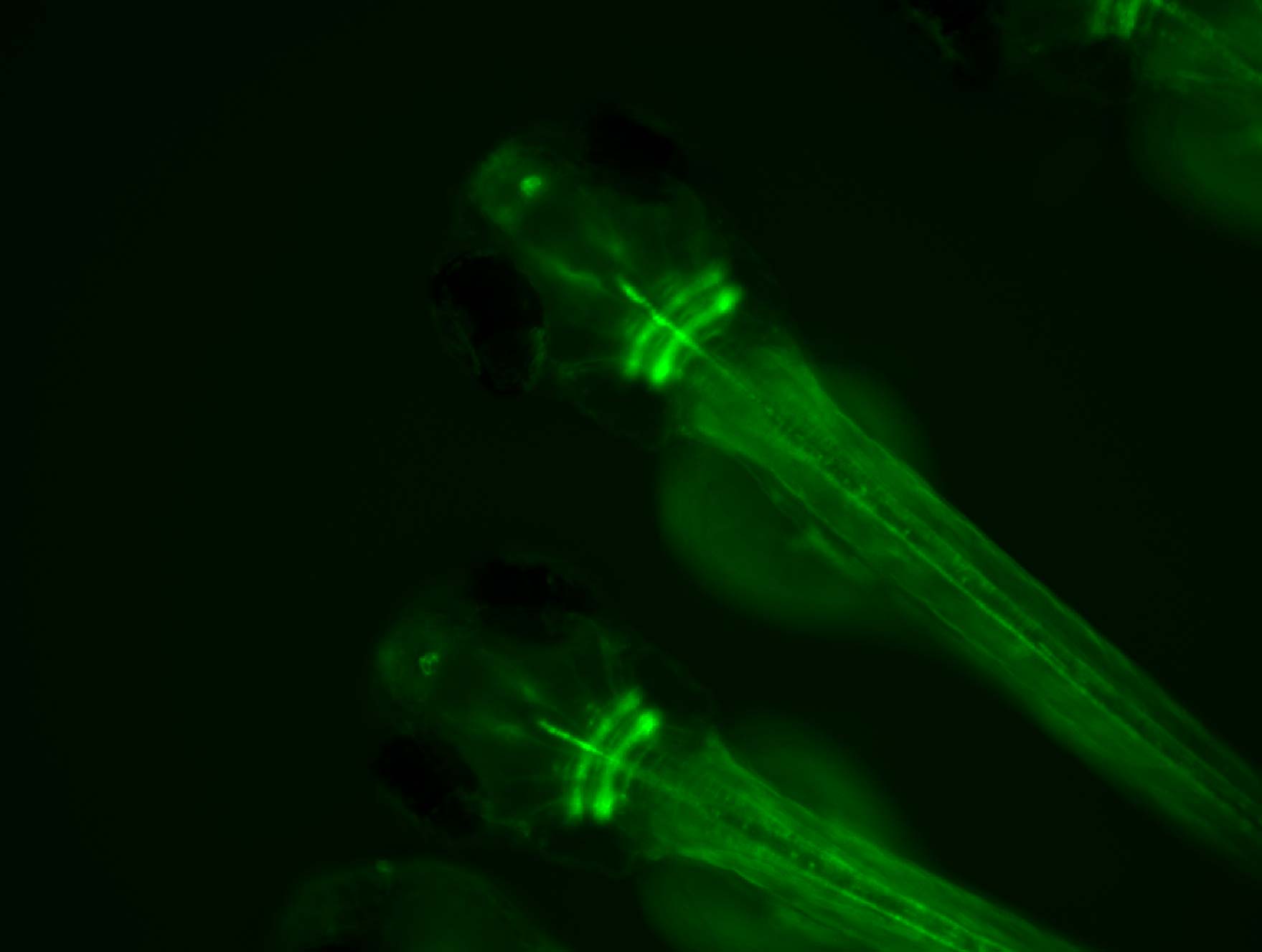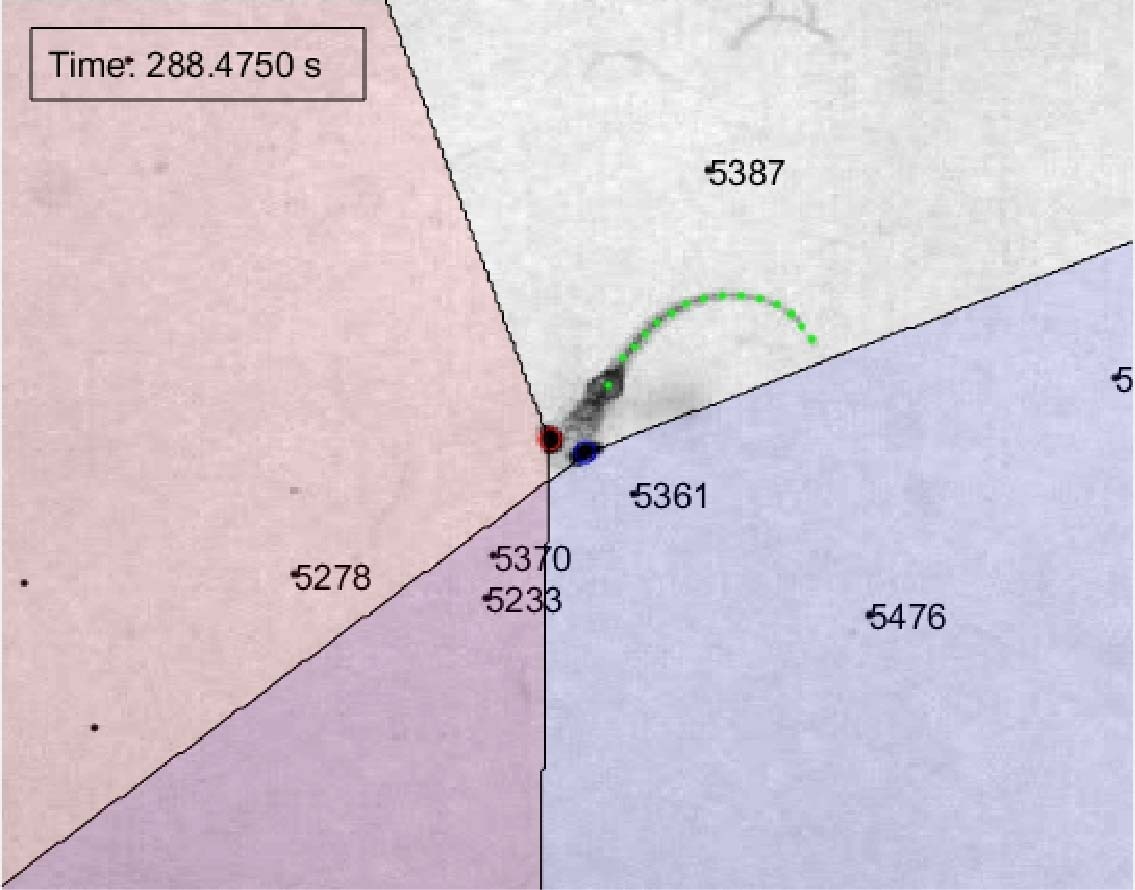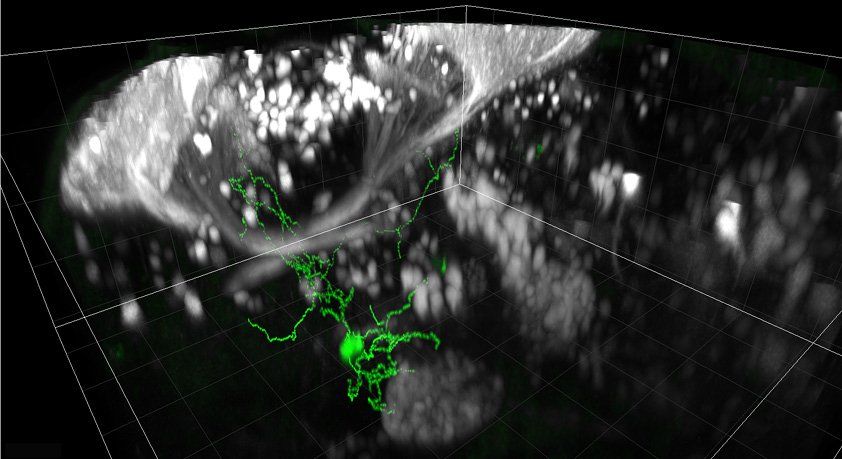Research
Our aim is to understand fundamental aspects of the structure and operation of the neural circuits that process sensory information to control animal behaviour.
We work with larval zebrafish – a vertebrate model that has a tiny, optically transparent brain – enabling us to use advanced light microscopy techniques to monitor neural activity during behaviour.
2-photon and light sheet microscopes allow us to record activity at single cell resolution throughout the brain of transgenic fish expressing genetically-encoded calcium indicators, which report neural activity with changes in fluorescence.
Our focus is on brain circuits that process visual stimuli (for example resembling predators or prey) to control adaptive behavioural responses (such as escape or hunting). We build virtual reality environments for zebrafish and examine neural activity underlying visual perception and the generation of locomotor programmes whilst the animal responds to naturalistic visual stimuli.





